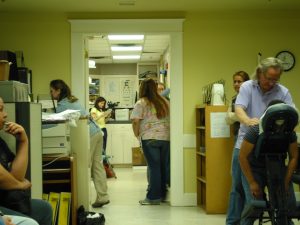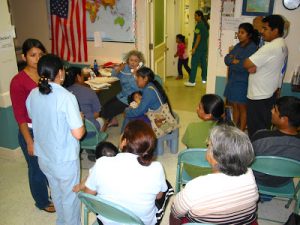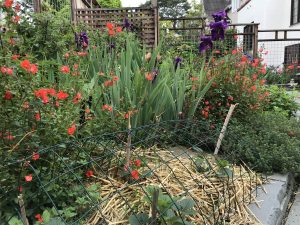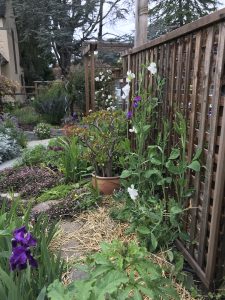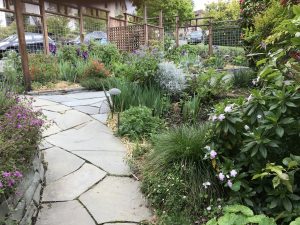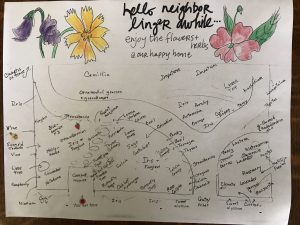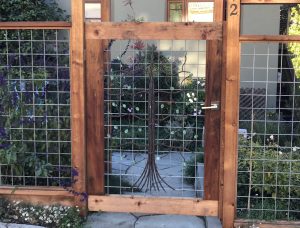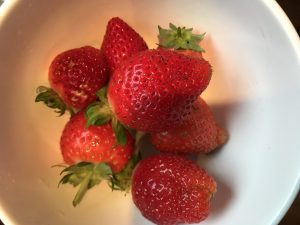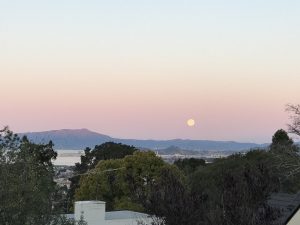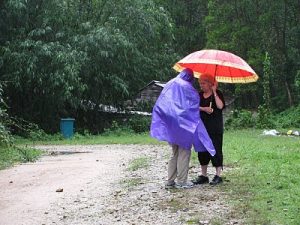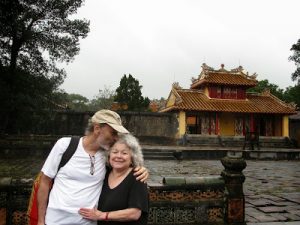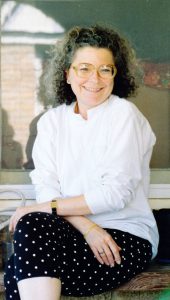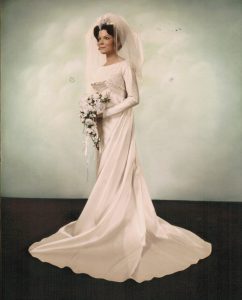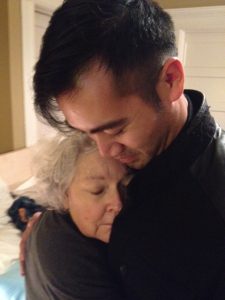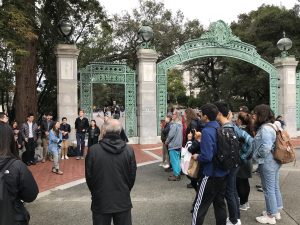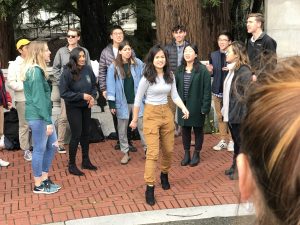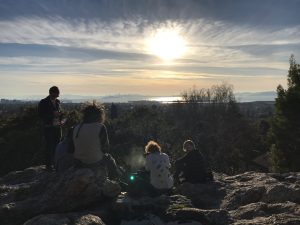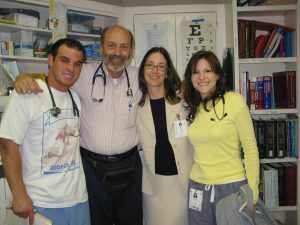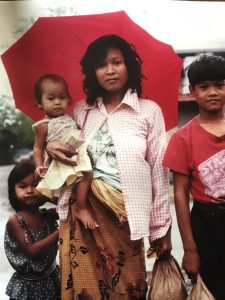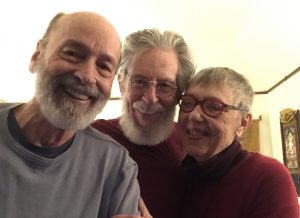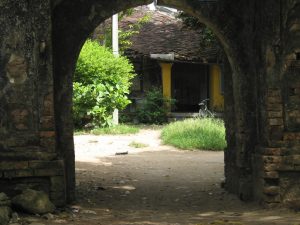
Gate in Hue
The photographs are all (except for one) from modern-day Vietnam. I took them on trips 2005-2015. My sense is that now most everybody there is looking forward, not back. At times, while I was in-country in 1966-67 I would think how the people there surely just wanted to live their lives – grow some food, fall in love, make babies – just living.
Vietnam is a beautiful country.
This post is a partial answer to the old psychotherapy question: what do you do when you feel anxious? One thing I do is to write. I write at other times as well, of course. This post is a monument to spending most of the day in the waiting room of the Kaiser Cardiac Procedures Unit. Everything turned out well, but you know, these places are worry-worthy.
The Bells of Hell was an English WWI ditty – the irony of doomed youth.
The Bells of Hell go ting-a-ling-a-ling
For thee but not for me:
For me the angels sing-a-ling-a-ling,
They’ve got the goods for me.
Oh! Death, where is thy sting-a-ling-a-ling?
Oh! Grave, thy victory?
The Bells of Hell go ting-a-ling-a-ling
For thee but not for me.
Weird shit
Paint it Black: For my last 5-6 months in Vietnam

At market in Hanoi, 2010
(out of 13 months and two days in-country) I was assigned to a “psychological operations” (psyops) unit. Psyops was a US Army unit with Marines like me assigned to work in it so that the Marine units could relate to what the psyops team was doing. My job was to go on operations with Marine Corps units, mostly at theDMZ. The team was one Marine, one soldier, and one Vietnamese translator. We carried big speakers, power units, and a tape player.
The idea was that when a unit dug in for the night, we would play Buddhist funeral music, Vietnamese songs
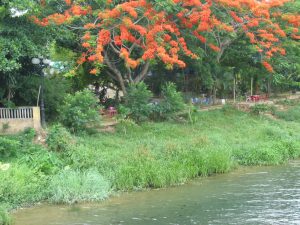
Beautiful Hue, on Perfume River, 2005
of love and nostalgia, and tapes exhorting the other guys (usually North Vietnamese Army units) to give up. The translator would also talk to the NVA over the loud-speakers, telling them their cause was hopeless, they were all going to die, their families were so sad, so on and so forth. Come to us. You’ll be greeted with open arms – Chieu Hoi, or something like that.
We would set up the speakers in trees in front of where the troops were dug in and crawl back to the line and start
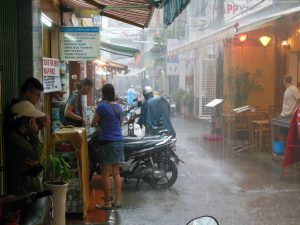
Rainy afternoon in Saigon, about 2012
the noise. The officers and NCOs hated us as they were busy leading men in war; the troops didn’t think too highly of us either as we often drew fire. But the troops enjoyed the end of the show when we played music from the Got Live Rolling Stones album – Paint it Black or Have You Seen Your Mother, Baby Standing in the Shadows and so on. Of course this drove the officers and staff NCOs crazy(er). They weren’t ready for a rock n’ roll war.
I would always hook up with a machine gun team somewhere on the line, because guns were what I knew. I would dig in with them and stand a watch if they wanted me to (Haha, though nobody ever stood up on those watches). The gun teams were always glad to see me –at least after all the noise stopped.
Lang Vei. Once we were sent to a Special Forces A-Team camp, called Lang Vei. There were 15-20 Americans there and several hundred Bru tribes-people. They had a groovy little dug-out with a couple of tables and chairs and a generator and fan(!) and refrigerator with cokes and beer in it. I was sitting in there and in walks an older white woman! She introduced herself – Martha Ray was her name. We talked and then someone came and took her somewhere else. Surreal.
I slept in a supply bunker and rats were everywhere, including from time to time running across my body.
There were a couple of prisoners in the camp, in barbed wire enclosures in the sun like coffins so small they couldn’t sit up.
I went on a patrol with the Special Forces troops. They made me really nervous with all their cluster-fucking short intervals.
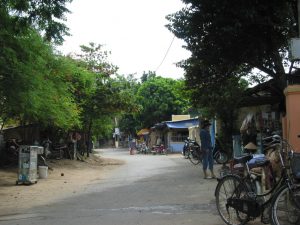
Street of Dreams, Hue, 2005. One of my favorite photos that I’ve ever taken.
I was glad to get out of that place. They were overrun a year or so later, with the NVA bringing tanks to the party.
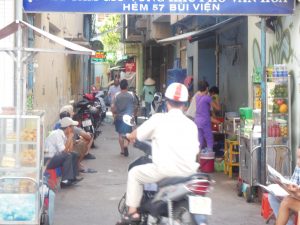
Saigon, 2012 – the food alley where we had breakfast most days. Leslie is sitting against the wall on the left. You can barely see her white hair
Phu Bai. One of the good parts of the job was that I was free to travel in the area of operations, known as I-Corps in northern southern Vietnam. I-Corps was where – by far – most of the fighting took place. Phu Bai was an airfield and Marine base near Hue. For a month or so my old unit, 1/26 (1st Battalion, 26th Marine Regiment) was stationed at Phu Bai before being sent to Khe Sanh. I went there to visit my mate, Jeff. He was staying in a large squad-size tent for 10-12 men. We got pretty drunk and decided to cook up some C-rations. One of the sergeants in the tent wanted us to be quiet and he and Jeff got into a fight. In the midst of the disturbance the sergeant stepped on the blob of plastique (C-4 explosive) we were using to heat the food. The burning C-4 stuck to the bottom of his foot, so not only was he beaten down by Jeff, but sustained a bad burn on his foot. 1/26 was sent to Khe Sanh a day or so later, so nothing ever came of it.
Gio Linh. I went to Gio Linh, one of several fire bases at the DMZ. That was the first time I was on the receiving end of heavy artillery. It’s not like in a movie. The rounds come screaming in unimaginably fast (like maybe half a second) and when they explode it’s a huge metallic bang. No booms in this deal. There’s nothing you can do in a static situation like this. In a battle at least you can keep moving. Marines don’t like to sit in a trench or fighting pit (Marines dig fighting pits; a foxhole is what’s underneath a foxes’ tail).
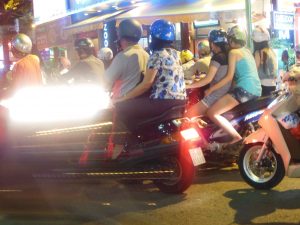
Saigon at night, 2010
The Hill Fights. From Gio Linh I caught a chopper to somewhere at the DMZ for something called the Hill Fights – a running large unit battle involving I guess 1000s of men in the Con Thien area. That deal was truly balls-to-the-wall. I describe the Hill Fights elsewhere:
http://ckjournal.com/vn-66-67-part-3-psyops-and-the-hill-fights (Looking at this link, I realize I’ve told a couple of stories in this post before. Oh well.)
One late afternoon I came in to a unit that was set up somewhere in a low-lying misty, wooded area after a big fight. It was dark by the time I got to the command post. The CO or someone told me to get out and keep quiet. There were some Marines sleeping nearby, wrapped in ponchos so I just laid down with them and went to sleep. In the morning I realized the men I thought were asleep were all dead.
I needed something to eat so went through a couple of their packs and got some C-rations. I was eating a cinnamon roll when some other men started carrying the bodies to some tracked vehicles, each with four 20mm cannons – “quad-20s.” I was helping load the bodies (bodies are so heavy) and the cinnamon roll was in my mouth and when we lifted one of the bodies my arms were over my head and the black bloody water ran down my arm and down my side. So much for the cinnamon roll.
The Heavyweight Champion of the World. I was in the hospital at Dong Ha for what we called jungle rot (ulcer on my hip from .45 holster rubbing, feet all swollen up, crotch inflamed). No air conditioning or even fans in that place. I was half asleep in a sweaty daze when someone woke me up. There was a kindly-looking middle-aged man standing there. He said something like, “Hi. I’m Floyd Patterson, Heavyweight Champion of the World.” And that’s who he was!
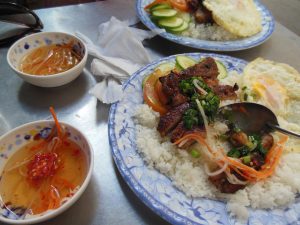
Breakfast in the food alley pictured above
Danang. The psyops unit was stationed in Danang and the troops were billeted in an old French hotel. I went there once a month for a few days to get paid. The room I stayed in was where transients like myself stayed. Just a tall-ceiling bare room with 3 or 4 racks for sleeping. I would come in, dump my muddy, dirty gear against a wall, take a shower, clean my weapon, and sleep, sleep, sleep with a ceiling fan clicking along and nobody shooting at me. Pretty fucking nice!
Once I went to a big base in Danang – I have no idea why – and at the entrance one of the MPs took my magazine out of the rifle I was carrying. I recall that he was surprised that there was a round in the chamber. I didn’t like having an unloaded weapon and as soon as I was inside the base, reloaded.
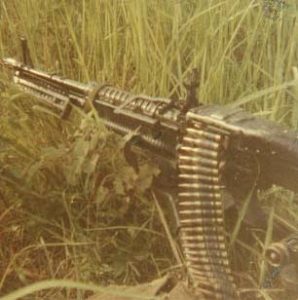
My M-60, my Big Gun in 1966
On that base I asked someone where a pisser was. He didn’t know what a pisser was. I explained something like, “You know, a piss tube.” He thought I was a crazy man + I couldn’t have smelled very good. Fuckers walking around saluting, no weapons or weapons unloaded, no pissers, eating hot chow, all clean and shaved, REMFs, every goddamned one of them. I couldn’t wait to get out of that place and back to that hotel for a few days of carousing before going back to the war.
Weapons. When I was with my infantry unit (C Company, 1st Battalion, 26th Marine Regiment), I always carried my M-60 machine gun. I got to be a squad leader, but continued to carry the Big Gun. They wanted me to quit and do squad leader stuff, but I wouldn’t and when the Gunny or Lt. confronted me I would just say, okay, and then as soon as we were out of sight, I’d take the gun back from whoever I’d pretended I was giving it to.
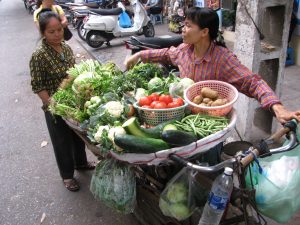
Hanoi, 2012
Gunners also carry a .45, which, in the civilian world is a big handgun, but in a war, hardly signifies. I sold my .45 to another Marine, who sent it to his criminal brother back in The World. I got another .45 off a body. I don’t remember what happened to that one.
I seldom carried grenades or a K-bar, because I always carried extra ammo for the gun and didn’t need anymore weight. Machine guns are all about maximum firepower – fire superiority it was called. By the time I cranked off the first 200 rounds, someone would be there with another 200. Pretty soon that fucking barrel would be smoking – too hot to touch.
When I went to the psyops unit I carried an M-14 with a nice sniper’s bipod. It was a very accurate weapon. I carried a shotgun on one
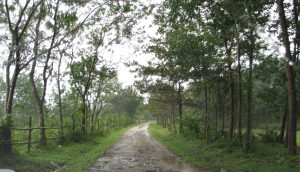
Countryside near Hue.
or two patrols, but it was an awkward thing and good only for close-in work, which wasn’t happening, thankfully.
Before psyops. After operations down south and then up at the DMZ, we realized we really were doomed youth. And it was like, oh well, fuck it. It was like one of the Foreign Legion commanders said to his troops at Dien Bien Phu: “You’re here to die.” (What an asshole. They should have fragged him right there.) Few of us sought or tempted death and few of us shrunk from it. Like I said, weird shit.
_______________
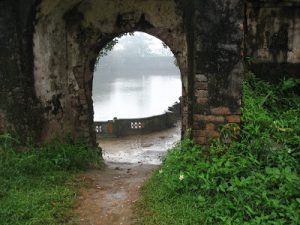
In Hue
Jean is still in the back at Cardiac Procedures. We got here at 0630 and it’s now 1230. There’s just one other family member left here now. Just sitting here. Suspended. Looking up every time a door opens. Getting hungry. Afraid to leave and good luck eating, anyway. Calling up old Bob Seger on my iPhone jukebox. Receptionist just told the other person waiting, “”They’ll be out to talk with you in a minute.”
1:30. Finished. Haven’t seen Jean yet, but procedure done and she’s in rhythm.
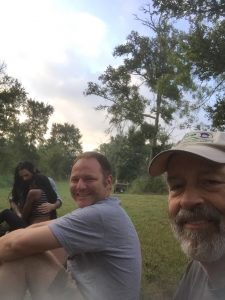
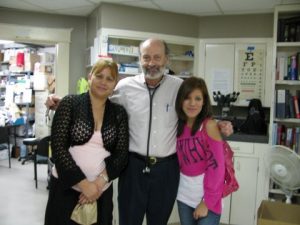
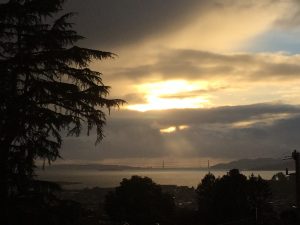
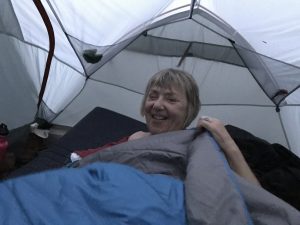
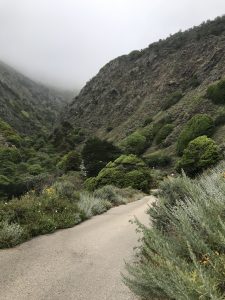
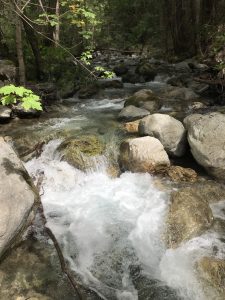
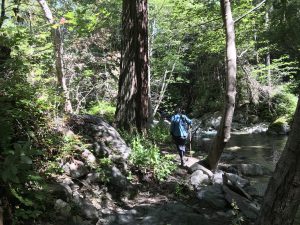
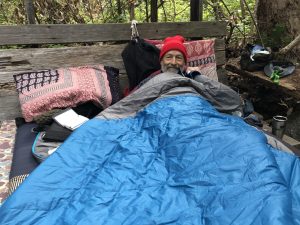

 growing out of 1000 year old mulch. The forest was still, beautiful, and Susan is a quiet, careful walker. We talked of beauty and life. After we walked I stayed behind at the common cabin and showered…
growing out of 1000 year old mulch. The forest was still, beautiful, and Susan is a quiet, careful walker. We talked of beauty and life. After we walked I stayed behind at the common cabin and showered…
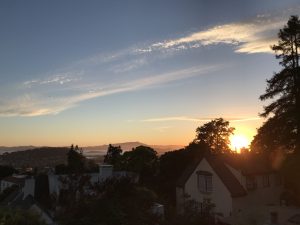
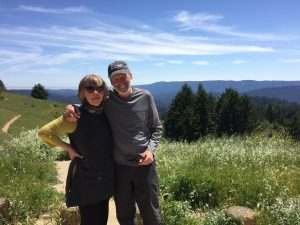
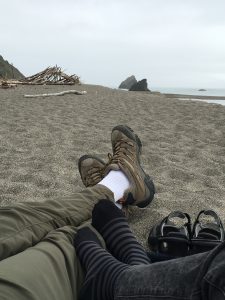
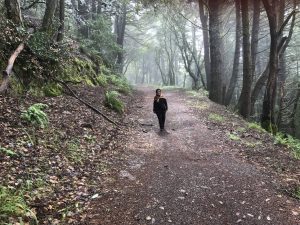
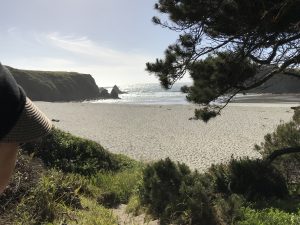
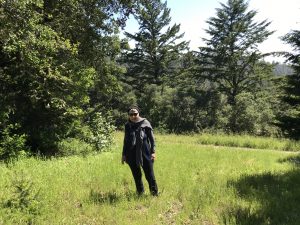
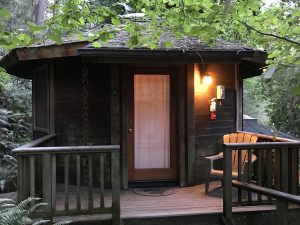
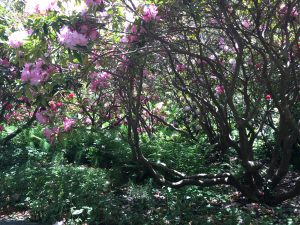
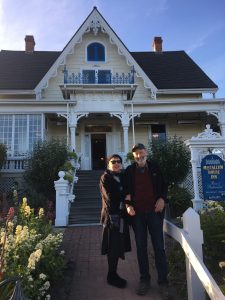
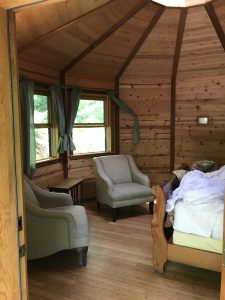
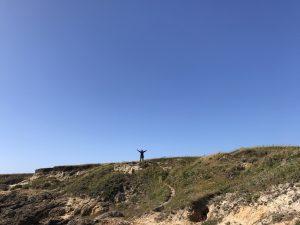
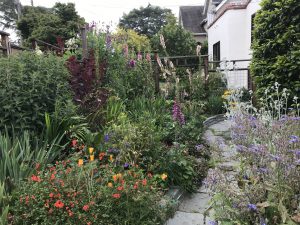


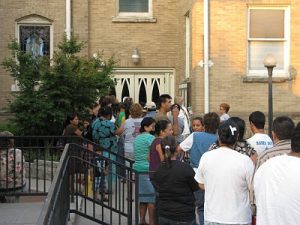
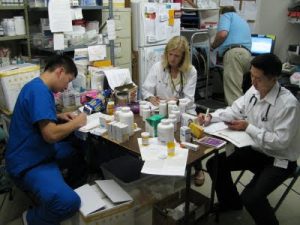 , and medical and NP students (the foundational care from the beginning of Agape). Photo: in the pharmacy (volunteer RN/former student, nurse practitioner, physician)
, and medical and NP students (the foundational care from the beginning of Agape). Photo: in the pharmacy (volunteer RN/former student, nurse practitioner, physician) l work and nursing.
l work and nursing.